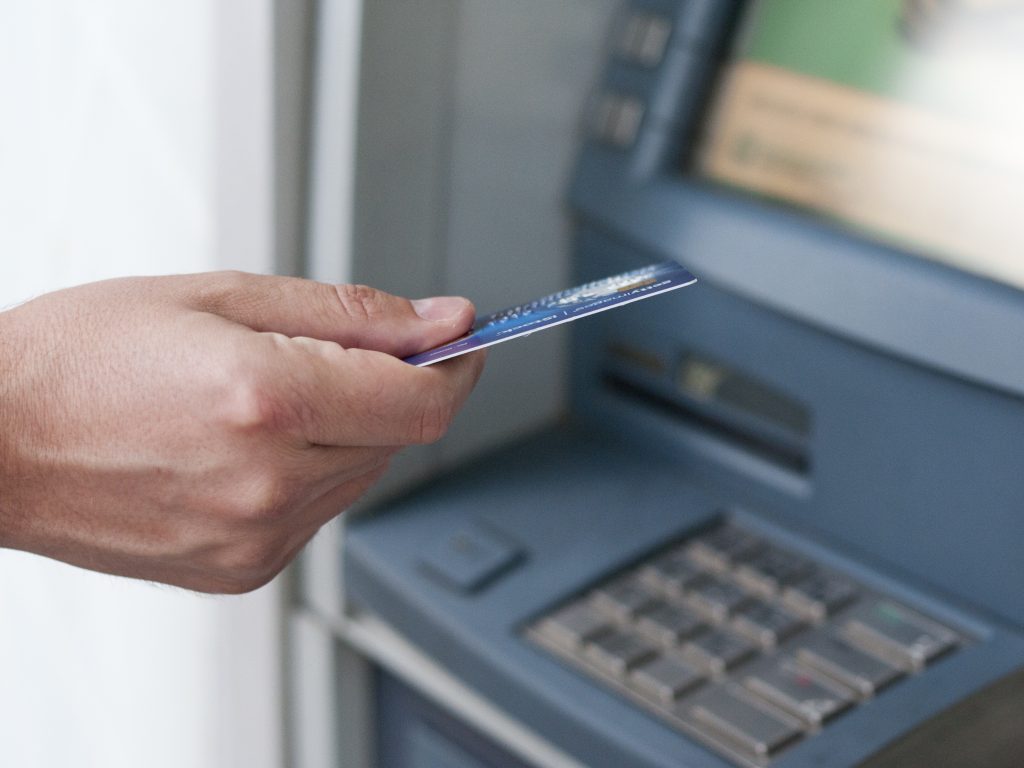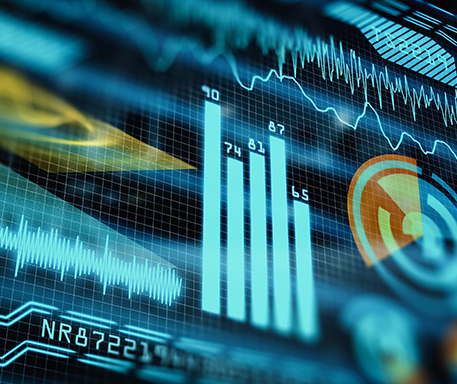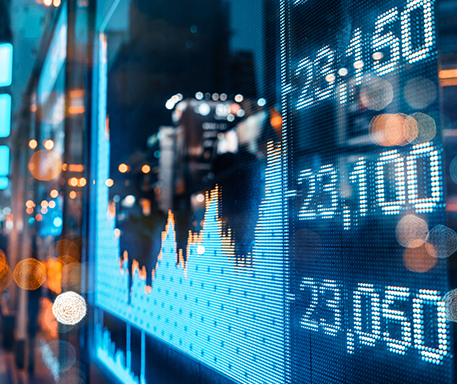Banks are in the business of making money, and a lot of it — even if that means charging you to deal with money that’s yours.
From ATM fees to overdraft fees to maintenance fees, banks have all sorts of ways of extracting funds out of consumers. You go to an out-of-network ATM for cash and wind up paying a few extra dollars. You don’t have a ton of money in your checking account and notice your bank is charging you each month just to hold onto your (dwindling) funds. Maybe you screw up, accidentally try to spend money that isn’t in your account, and you get slapped with a $35 overdraft fee. Or you don’t have a bank account, need to cash a check, and the place where you do it winds up keeping a cut.
The whole thing can feel a little gross. Sure, banks are private businesses beholden to shareholders. At the same time, it’s hard not to look at the ways big and small they’re scooping up extra cash and think wait, what? Banks made $279.1 billion in 2021, up $132 billion from the year before.
“One might want to question whether the amount of fees that are being charged are necessary to cover the costs, given those levels of profit margins,” said Brian Shearer, senior adviser to the director at the Consumer Financial Protection Bureau (CFPB), which recently launched an initiative to look into what it describes as “junk fees” from banks and financial institutions. “One, they add up and they really can have a substantial impact on consumers’ pocketbooks, and, two, we’re concerned that they distort the competitive process and have hindered overall competitive forces in banking.” The concern is that consumers aren’t able to effectively comparison shop because of practices such as drip pricing or hidden pricing that hide actual costs. Basically, if you’re looking for a new bank and on the back end there are all sorts of fees you don’t notice, you might not make the best choice for yourself — and banks won’t have to compete as hard for your business.
“One might want to question whether the amount of fees that are being charged are necessary to cover the costs, given those levels of profit margins,” said Brian Shearer, senior adviser to the director at the Consumer Financial Protection Bureau (CFPB), which recently launched an initiative to look into what it describes as “junk fees” from banks and financial institutions. “One, they add up and they really can have a substantial impact on consumers’ pocketbooks, and, two, we’re concerned that they distort the competitive process and have hindered overall competitive forces in banking.” The concern is that consumers aren’t able to effectively comparison shop because of practices such as drip pricing or hidden pricing that hide actual costs. Basically, if you’re looking for a new bank and on the back end there are all sorts of fees you don’t notice, you might not make the best choice for yourself — and banks won’t have to compete as hard for your business.
There’s all sorts of advice out there about how to avoid bank fees that encourage consumers to be savvy and shop around. But the reality is not everybody has the time, energy, or ability to do that much leg work. And, again, sometimes the extra costs and fees are hidden, making it even harder to manage. Ultimately, there’s only so much we can expect out of private banks — which is why some experts say the public sector, like the post office, would be a better option.
It’s expensive to get and use your own money
It’s not the case that banks shouldn’t charge anything for anything — they’re private institutions, not public. It costs them money to install and maintain ATMs, to transfer money among themselves, to pay employees, insure deposits, offer different services, make sure customers aren’t money laundering, etc. But it’s hard not to wonder if they’re not being a little aggressive, whether the fees they charge always align with their costs.
“There are an array of fees that consumers get charged that we may look at and think, ‘I shouldn’t be charged for that,’ but don’t know it’s excessive or downright wrong to charge people to manage their own money,” said Elyse Hicks, consumer policy counsel at Americans for Financial Reform.
The FDIC lists out the different types of fees banks can place on checking accounts, and the list is long. They can charge monthly service fees, also called maintenance fees, ATM fees, check printing fees, and stop payment fees, among others. They also can charge insufficient funds fees and overdraft fees, which happen when people don’t have enough money in their checking accounts to cover a transaction. In the case of insufficient funds, the transaction gets denied; on overdrafts, it clears even though it’s surpassed the amount of money in someone’s account.
According to a study of checking account fees and ATM fees from Bankrate in 2021, about half of noninterest checking accounts, meaning accounts where the bank just holds your money, are free. The same is true for just 8 percent of interest checking accounts, where people earn interest on their money but can also come with relatively high costs that make the endeavor a wash. The cost of interest checking accounts averaged $16.35 per month, a record high. Monthly fees on noninterest checking accounts were $5.08, marking a decline. For interest checking accounts, consumers had to have on average nearly $10,000 in the accounts to avoid maintenance fees. Noninterest accounts required about $500, which is obviously quite a bit less but still a good amount.
Insufficient funds fees also increased in 2021, to $33.58. While out-of-network ATM fees fell slightly, the average total cost was still $4.59. By comparison, in 1998, insufficient funds fees averaged $21.57, and out-of-network ATM fees $1.97, according to Bankrate.
Insufficient funds fees and overdraft fees have been in the news lately, thanks in part to some high-profile banks deciding to scrap them. Ally Bank, Capital One, and other banks have eliminated the practice of charging overdraft fees. But as Tatiana Walk-Morris recently outlined for Vox, plenty of banks still charge them, and they can add up. Bank overdraft fees, which can average about $35, are often higher than the transactions that trigger them. While some banks offer a cushion on them, many don’t. And they can be a cash cow: According to the CFPB, bank revenue from overdraft and insufficient fund fees hit $15 billion in 2019. For some small banks, overdraft fees make up a huge amount of their profit.
People hit hardest by fees on checking accounts and other random bank fees are often more vulnerable. According to Bankrate, Black consumers pay double the bank fees white consumers do, and Hispanic consumers triple. Bank fees are often hardest to navigate for people with the least means, who can’t keep enough in their accounts to avoid maintenance fees or from time to time accidentally spend a little more than they have. Flat out-of-network ATM fees mean someone who is only able to take out $40 at a time is paying a higher rate to do that than someone who can take out $400.
“We have this distorted cross-subsidy where the biggest revenue on checking accounts is coming from the people with the least money, and they’re subsidizing the checking accounts of those with more money,” said Mike Calhoun, president of the Center for Responsible Lending.
The situation is often worse for people without a bank at all — being unbanked in America is very expensive.
When banks have you, they have you
The way you’re supposed to avoid fees and make sure you’re getting the best deals is to do your research and switch to better offers. And there are options available for consumers to find banks and accounts with lower fees. Some institutions reimburse out-of-network ATM fees, or they offer free checking accounts or waive overdraft fees. Or people can just go to ATMs that are in their networks (some ATM fees from your own bank are a way to get you to do this and try to keep you loyal).
But sometimes, when you need money, you’re not in a spot to seek out a specific ATM. They’re money-makers for businesses that have them, and they can push you toward them, too. You’ve probably found yourself in a bar or restaurant that only accepts cash — and just happens to have a high-fee ATM on the premises.
Banks also know that once they have you as a customer, it’s not super easy to just hop over to the better deal.
“Bank accounts are what would be known in the trade as sticky — it’s relatively hard to transfer bank accounts. It’s a lot of work, and if you don’t have a cash float, it’s a challenge, because you have to leave cash in your old account in case anything clears through there and you have to have cash in your new account,” Calhoun said.
On average, checking account holders stay with their financial institutions for over 17 years. People in many parts of the country live in “banking deserts,” where they just don’t have access to many — or any — banking options.
Some experts warn that bank mergers have also done harm by creating more banking deserts and reducing competition, allowing banks to, among other things, increase costs. Some studies show that increased fees make customers say they’re likelier to switch banks, but that’s only if they’ve got other options or if they’re clear on what hidden fees are there in the first place. Certain banks getting rid of overdraft fees now could pressure others to follow suit. At the same time, overdraft fees began in part because one bank started doing it and then others did too.
Banking fees are associated with access to the payments system and all of the products and services that come along with that. Aaron Klein, a senior fellow in economics studies at the Brookings Institution, said that it is expensive for banks to deal with anti-money-laundering compliance laws, and ATMs can come at a cost to maintain. “I don’t have much sympathy to the industry in terms of the cost of deposit insurance or the cost of some of these other things, but I do have sympathy on the money laundering,” he said. “The overdraft fees are almost pure profit. There’s very little default; for the bank to let your account go negative isn’t really necessarily costly for them.”
Given technological advancements that are surely making transactions more efficient for banks, it’s also hard not to wonder why those savings aren’t trickling down to consumers. Banks aren’t spending $30 to deal with a bounced check.
“At the same time that technology should have and has decreased the cost of certain interactions, the fees purporting to compensate for those interactions have been increasing,” Shearer, from the CFPB, said.
Some people in the banking industry say that measures such as overdraft fees are meant to deter customers from overspending. In the past, banks have used overdraft protections (and fees) in their marketing to try to entice customers.
Shearer questioned whether banks should be in the business of trying to penalize people’s behavior. “It’s problematic to think about fees as some kind of penalty or fine. These are businesses, not governments, and it’s not clear that banks should be in the business of trying to police behaviors through fees. It’s one thing to compensate a cost, but it’s another thing to use it as a profit source or to sort of take on the role of an authority that penalizes the public,” he said.
And again, all of this makes the situation even worse for people without a bank account at all. They wind up having to pay to cash a check. It might cost a flat fee, like $4 or $8, to cash a check, or the institution will take out a certain percentage.
“In this day and age, to participate in commerce, you have to have some sort of digital wallet, digital account. And in order to use any digital account, as in not cash, you have to go through a bank,” said Mehrsa Baradaran, a law professor at the University of California Irvine. “And banks do not have to have all the customers.”
The bank, but at the post office?
On an individual level, there are ways for people to try to avoid bank fees where they can. If you’re in the market for a new checking account or debit card, choose one where there are many ATMs in your area, or find one that offers reimbursements for out-of-network fees. You can also opt for accounts without overdraft fees or with overdraft cushions. And it’s always a good idea to read the fine print about what other little costs you might get hit with behind the scenes.
Still, there’s only so much people can personally do. The point of banks is to make money and to increase profits, and if fees are a way to do that, they’re going to.
“It’s not the fault of the banks. It’s like being mad at a tiger for doing the thing that a tiger does, it’s a predator,” Baradaran said. This all lines up with their incentive structures. “We, by policy, have allowed them to be the size that they are, to have the amount of market power that they have, to merge their deposit bank services with their stock market speculation. So we have these megabanks that do everything, and they do have a lot of control and power. And it’s not their fault. Why should they lose money?”
Baradaran is among experts who have advocated for postal banking, which would essentially turn the US Postal Service into a place that would also offer basic banking services like checking accounts, savings accounts, and payments. The idea is that it would reach and serve as an option for the unbanked and offer lower-cost options for transactions than private banks, such as low-fee ATMs and check cashing. Postal banking has been proposed on Capitol Hill, but thus far, it hasn’t gotten very far legislatively.
In the meantime, many consumers are just going to be a little bit stuck navigating the fee environment on their own.
We live in a world that’s constantly trying to sucker us and trick us, where we’re always surrounded by scams big and small. It can feel impossible to navigate. Every two weeks, join Emily Stewart to look at all the little ways our economic systems control and manipulate the average person. Welcome to The Big Squeeze.
Categories: Banking






